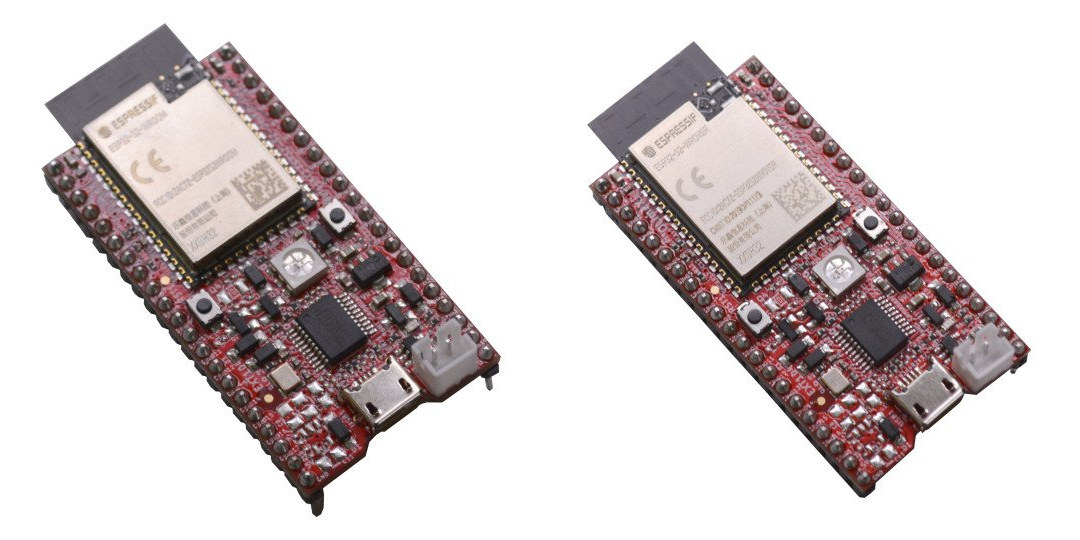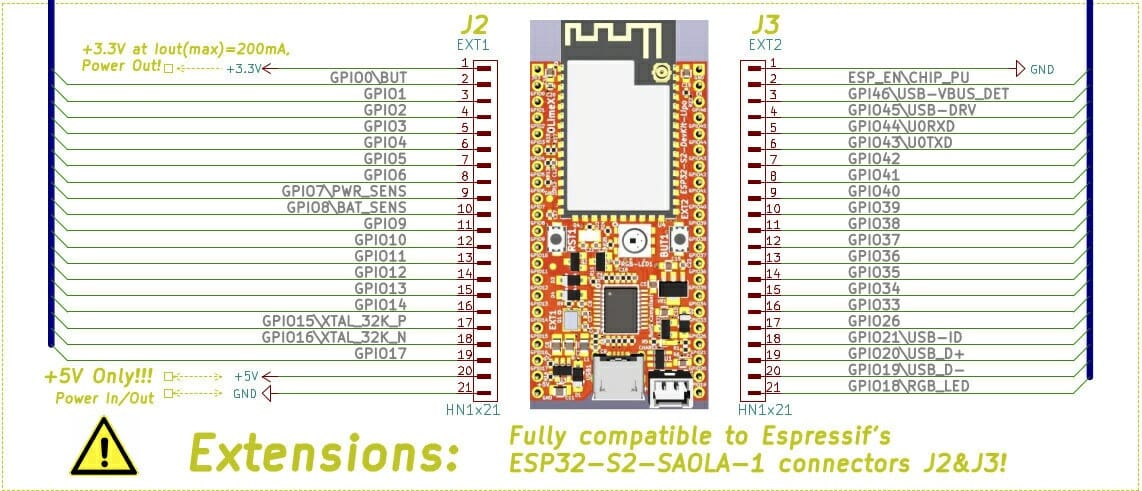A few months ago, Olimex unveiled renders of ESP32-S2-Devkit-LiPo WiFi board that was supposed to consume as little as 2uA in sleep mode, follows ESP32-S2-Saola-1 board form factor and pinout, and adds an ultra-efficient circuitry to support LiPo batteries.
The good news is that Olimex has now launched two versions of their ESP32-S2 board optimized for battery-powered applications with ESP32-S2-DevKit-Lipo and ESP32-S2-WROVER-DevKit-Lipo (with 2MB PSRAM) going for 5.56 Euros and 6.36 Euros respectively.

ESP32-S2-DevKit-LiPo specifications:
- Wireless module:
- ESP32-S2-DevKit-LiPo – ESP32-S2-WROOM with Espressif ESP32-S2 single-core 32-bit LX7 microprocessor up to 240 MHz with 128 KB ROM, 320 KB SRAM, 16 KB SRAM in RTC, 4MB SPI flash
- ESP32-S2-WROVER-Devkit-LiPo – ESP32-S2-WROVER – same as above plus 2MB PSRAM
- Wireless connectivity – 2.4 GHz 802.11 b/g/n WiFI 4 up to 150 Mbps
- Expansion – 2x 20-pin I/O headers with SPI, I2S, UART, I2C, touch sensors, PWM, etc… (pin-to-pin compatible with ESP32-S2-SAOLA-1)
- Debugging – Micro USB port via CH340T USB to serial chip
- Misc – RGB LED, Reset button, user button
- Power Supply
- 5V via micro USB port or I/O pins
- 2-pin header for LiPo battery plus battery charging and monitoring circuit, external power supply sense

The less good news is that power consumption is higher than first advertised because Espressif expected 2-4uA power consumption for ESP32-S2-WROVER module, but the number eventually had to be revised to 20uA. Other inefficiencies mean the board can consume as little as 30uA in deep sleep mode, still not too bad.
Olimex also explains the RGB LED consumes around 700uA even when not in use, so they added an RGB disable solder jumper for people wanting to power the ESP32-S2 board with a LiPo battery.
The board is also software compatible with ESP32-S2-SAOLA-1 and supports the Espressif ESP-IDF framework, PlatformIO, the Arduino IDE, and anything that can run on the official board. As usual, Olimex released the KiCad schematics, PCB layout, and Gerber files on Github making the board open-source hardware under a CERN license.

Jean-Luc started CNX Software in 2010 as a part-time endeavor, before quitting his job as a software engineering manager, and starting to write daily news, and reviews full time later in 2011.
Support CNX Software! Donate via cryptocurrencies, become a Patron on Patreon, or purchase goods on Amazon or Aliexpress





According to Olimex no Ethernet and no Bluetooth with S2…